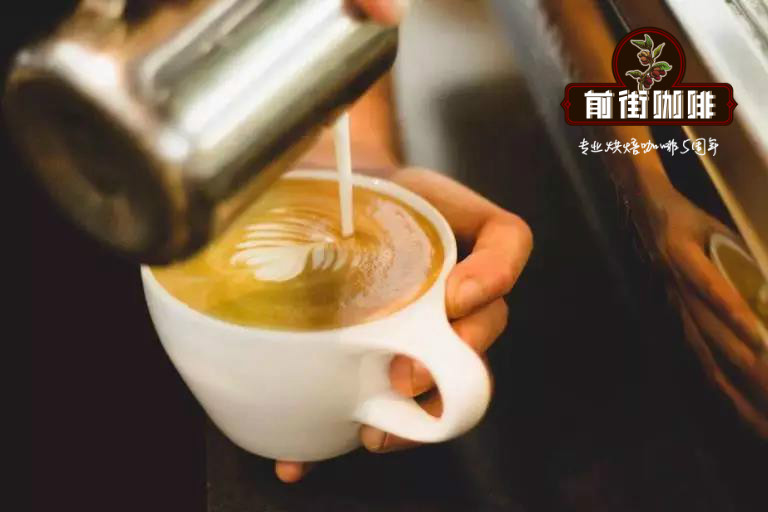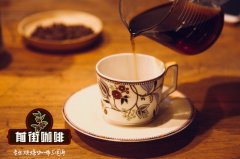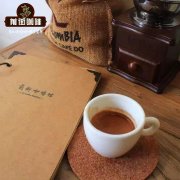A short story about the history of mocha coffee pot is mocha coffee pot from Yemen? who invented the mocha pot?

Professional coffee knowledge exchange more coffee bean information please follow the coffee workshop (Wechat official account cafe_style)
Mocha pots, also known as steam brewing coffee pots, are the most well-known brewing utensils in Italy. Alfonso Bialetti invented the mocha kettle in 1933 and now it has become a tool that people in Italy, Spain, Portugal and parts of South America use every morning.
The mocha pot is named after the Yemen city of Mocha, which is also one of the most famous Arabica coffee bean producing areas.
To this day, the mocha pot has almost completely retained its original design. The first aluminum mocha pot (now multi-purpose alloy), with its iconic octagonal design, represents its best-known industrial philosophy and is now on permanent display at the Museum of Modern Art in Manhattan, New York.
Bialetti's original design of the mocha pot was inspired by household washing machines. At that time, there was a metal tube in the middle of the washing machine, which sucked up the heated soapy water from the bottom of the washing machine and sprayed it onto the top of the clothes.
The design of the mocha pot is very simple, and the main parts include a bottom pot with a pressure valve (boiling device), a funnel-shaped metal filter for holding coffee powder, a rubber seal, a top pot connected with a bottom metal filter (collection device), a central pipeline for coffee, and a Bakelite (heat-stabilized material) handle.
There are all kinds of mocha pots on the market, ranging from the minimum capacity of the newly released 40ml to a maximum capacity of 18 cups of coffee. The most commonly used is a mocha pot that can make one or three cups of coffee at a time, and about 80% of the mocha pots on the market are of this capacity.
Pour less than half a pot of cold water into the bottom pot (although hot water can speed up cooking, it is not recommended). Fill the funnel-shaped metal filter with ground coffee powder (20-22g, the degree of grinding is equal to that of Italian concentrate). Then install the top pot and place the mocha pot on the gas stove (or the lowest induction cooker) with low to medium flame. If placed on the gas stove, the flame should be able to fully touch the bottom of the pot. The lid can be opened to the left to avoid excessive internal pressure leading to coffee overflow.
After 4 to 5 minutes, the water in the pot begins to boil slowly and steam is produced in the lower part of the kettle. At this time, attention should be paid to the state of the pressure valve and rubber seal to ensure that the seal is complete and that there is no leakage, otherwise the air pressure will be too high. When the final pressure is high enough (between 0.1 and 0.2 MPA), the hot water will be squeezed through the coffee powder in the metal filter. Like other common cooking methods, the water temperature will not exceed 90 ℃. The process by which water passes through coffee powder to produce coffee liquid is called percolation.
When the bottom pot is empty, the coffee will begin to enter the top pot, a process called strombolian, named after the stromboli volcano. At this time, it is recommended to reduce the temperature to prevent the coffee from overflowing too quickly and cooking to produce an unpleasant taste. At this point, take care to cover the lid (to prevent the coffee from splashing everywhere) and turn off the heat when the top pot is about to be filled-the whole process will continue until all the coffee enters the pot. In order to achieve uniform cooking and balanced taste, it is recommended to shake the kettle before pouring out.
Like other brewing methods, the taste of coffee brewed in mocha pot mainly depends on the variety, roasting degree, grinding degree, water quality and water temperature of coffee beans.
In Italy, people usually choose 100% Arabica coffee beans, which are more common in Brazil and Colombia, and Italians prefer coffee beans that are deeply roasted (not as deep-roasted as French roasting). This combination gives the coffee a more prominent nutty and chocolate flavor, with a long and slightly bitter finish. Of course, the very basic common sense is that the ground beans should not be kept for too long-the fresher the coffee beans, the more obvious the flavor. Ground coffee powder needs to be stored in a cool and dark place, preferably in a vacuum, dry, moistureproof container.
The right degree of grinding mainly affects coffee in two ways, and it is also suitable for other brewing methods: if it is ground too finely, it is difficult for the water to pass smoothly through the coffee powder to cause the coffee to show a bitter taste. If the grinding particles are too coarse, it will lead to insufficient extraction, flavor is not obvious, light and tasteless. Pressing the coffee powder in the filter too hard can also clog the filter and increase pressure, which is also a very dangerous operation.
Water quality can also affect the final result, so cold distilled water is recommended, and warm distilled water is also recommended, because overextraction can sometimes be avoided.
The temperature during the extraction process will also affect the taste of the coffee. If the flame is too hot and the brewing process is too fast, it will lead to a lack of development of the coffee flavor, because it will reach the final ideal temperature too quickly before the whole brewing process is completed. Too high flame temperature will also melt the rubber seal. If the flame temperature is too low, it may take too long to complete the whole brewing process, which is likely to give the coffee a bitter aftertaste. Finally, after the coffee is made, pay attention to keep the mocha pot away from the flame in time to avoid the coffee boiling overflow.
Although the extraction time of the mocha pot is shorter than that of hand-brewed coffee, the coffee from the mocha pot basically contains more caffeine. Depending on the coffee beans and the degree of grinding, the coffee from the mocha pot may also have the crema found on the Italian concentrated surface (the rich, aromatic, light brown dense foam oil surface produced when steam foam is combined with the coffee oil produced after grinding).
Before using the new mocha pot, it is recommended to rinse several times with water and then with coffee. This can wash away the harmful substances left in the production of the mocha pot and eliminate the risk of drinking coffee with a metallic flavor.
When cleaning the mocha pot, you should avoid using any detergent, but only rinse with hot water to avoid removing the protective layer in the pot and causing any bad substances to be mixed in the coffee. It is also not recommended to use detergent to clean the mocha kettle, as it will dissolve the protective layer in the kettle and cause metal oxidation corrosion, especially to the aluminum part.
It is also important to change the rubber seal regularly and check the cleanliness and tightness of the pressure valve again and again. Also pay attention to cleaning the filter above the bottom pot. Scale and other precipitates can be cleaned with diluted white vinegar-place the diluted white vinegar in a bottom pot and pour it out overnight, then rinse with hot water.
Important Notice :
前街咖啡 FrontStreet Coffee has moved to new addredd:
FrontStreet Coffee Address: 315,Donghua East Road,GuangZhou
Tel:020 38364473
- Prev

Where does Kopi Luwak come from? what kind of cats are there? what's the difference between Vietnamese Kopi Luwak and Indonesian flavor?
Professional coffee knowledge exchange more information about coffee beans please follow the coffee workshop (Wechat official account cafe_style) Kopi Luwak, produced in Indonesia, one of the most expensive coffee in the world. Indonesia grows a lot of coffee crops. On the island of Sumatra, a kind of arboreal wild animal called civet, which likes to eat fat, multi-paddled coffee fruit, coffee beans through the hair in its body.
- Next

Arabica coffee beans knowledge of Arabica coffee producing area which kind of Arabica coffee
Professional coffee knowledge exchange more information about coffee beans please follow the coffee workshop (Wechat official account cafe_style) the birthplace of Arabica coffee in Ethiopia. The coffee tree originated in Ethiopia, which was originally a wild plant here, and the name coffee comes from the Ethiopian town of Kaffa. In fact, many coffee trees in Ethiopia
Related
- Beginners will see the "Coffee pull flower" guide!
- What is the difference between ice blog purified milk and ordinary milk coffee?
- Why is the Philippines the largest producer of crops in Liberia?
- For coffee extraction, should the fine powder be retained?
- How does extracted espresso fill pressed powder? How much strength does it take to press the powder?
- How to make jasmine cold extract coffee? Is the jasmine + latte good?
- Will this little toy really make the coffee taste better? How does Lily Drip affect coffee extraction?
- Will the action of slapping the filter cup also affect coffee extraction?
- What's the difference between powder-to-water ratio and powder-to-liquid ratio?
- What is the Ethiopian local species? What does it have to do with Heirloom native species?

